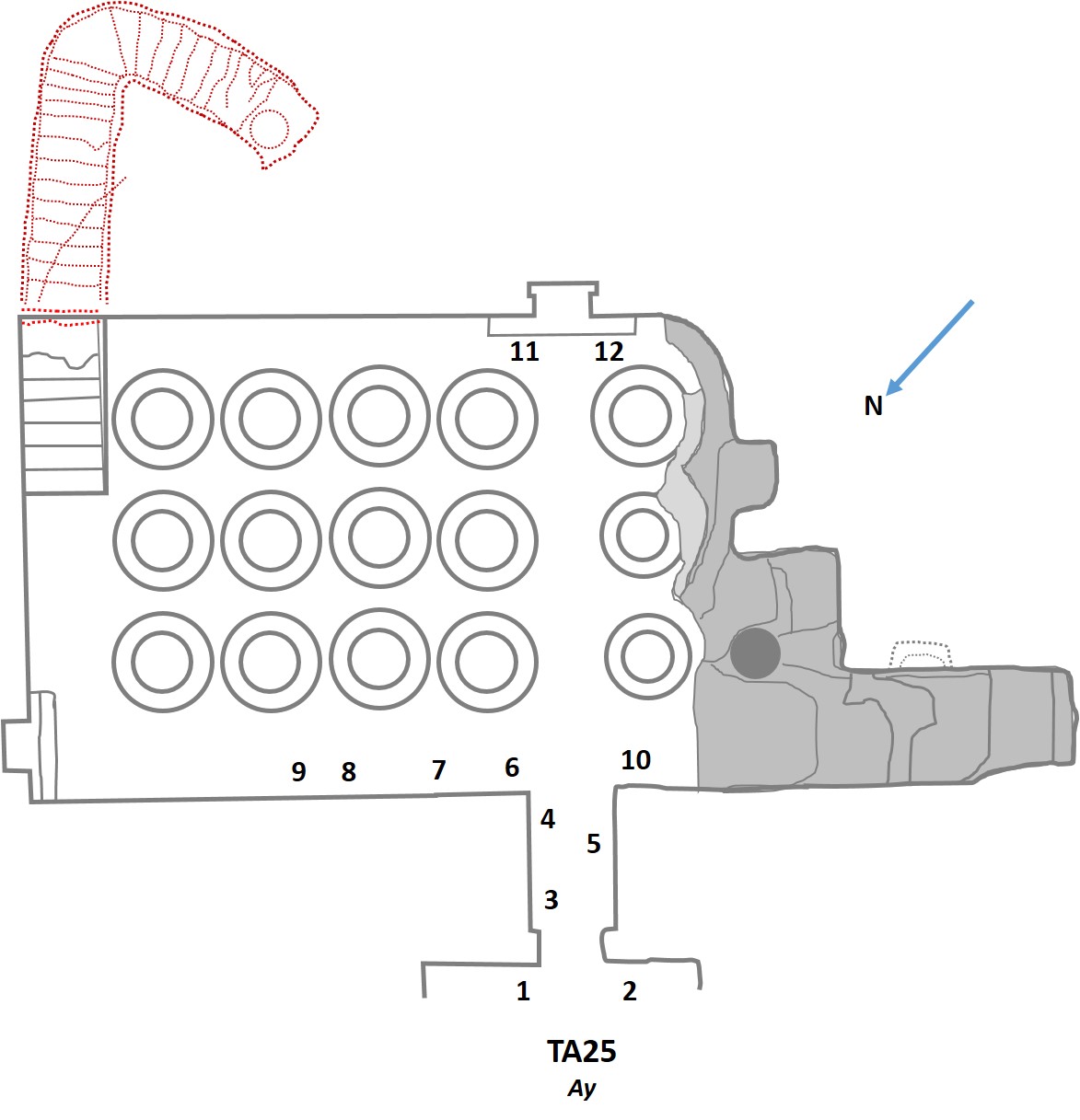Southern Tomb 25 on:
[Wikipedia]
[Google]
[Amazon]
The Tomb of Ay at Amarna is a tomb chapel in
 On Boundary Stela K, one of the sixteen large granite stelae that set the boundaries of Ahketaten, Akhenaten dictated the tombs beyond the royal necropolis to include "Let there be a tomb made for The God's Father." This tomb could be the evidence of that edict being carried out.
The titles listed in Ay's tomb were: The God's Father; The Favorite of The Good God, Ay; Father of Divinity; Acting Scribe of the King, Beloved by Him; Fanbearer on the Right Hand of the King; Overseer of All the King's Horses of His Majesty; Companion; The General Ay.
On Boundary Stela K, one of the sixteen large granite stelae that set the boundaries of Ahketaten, Akhenaten dictated the tombs beyond the royal necropolis to include "Let there be a tomb made for The God's Father." This tomb could be the evidence of that edict being carried out.
The titles listed in Ay's tomb were: The God's Father; The Favorite of The Good God, Ay; Father of Divinity; Acting Scribe of the King, Beloved by Him; Fanbearer on the Right Hand of the King; Overseer of All the King's Horses of His Majesty; Companion; The General Ay.
Amarna
Amarna (; ) is an extensive ancient Egyptian archaeological site containing the ruins of Akhetaten, the capital city during the late Eighteenth Dynasty. The city was established in 1346 BC, built at the direction of the Pharaoh Akhenaten, and a ...
, Egypt
Egypt ( , ), officially the Arab Republic of Egypt, is a country spanning the Northeast Africa, northeast corner of Africa and Western Asia, southwest corner of Asia via the Sinai Peninsula. It is bordered by the Mediterranean Sea to northe ...
. It is the last and southernmost tomb in Amarna and is named Southern Tomb 25. It was intended for the burial of Ay, who later became Pharaoh
Pharaoh (, ; Egyptian language, Egyptian: ''wikt:pr ꜥꜣ, pr ꜥꜣ''; Meroitic language, Meroitic: 𐦲𐦤𐦧, ; Biblical Hebrew: ''Parʿō'') was the title of the monarch of ancient Egypt from the First Dynasty of Egypt, First Dynasty ( ...
, after the 18th Dynasty
The Eighteenth Dynasty of Egypt (notated Dynasty XVIII, alternatively 18th Dynasty or Dynasty 18) is classified as the first dynasty of the New Kingdom of Egypt, the era in which ancient Egypt achieved the peak of its power. The Eighteenth Dynasty ...
king Tutankhamun
Tutankhamun or Tutankhamen, (; ), was an Egyptian pharaoh who ruled during the late Eighteenth Dynasty of Egypt, Eighteenth Dynasty of ancient Egypt. Born Tutankhaten, he instituted the restoration of the traditional polytheistic form of an ...
. The grave was never finished, and Ay was later interred in the Western Valley of the Valley of the Kings
The Valley of the Kings, also known as the Valley of the Gates of the Kings, is an area in Egypt where, for a period of nearly 500 years from the Eighteenth Dynasty to the Twentieth Dynasty, rock-cut tombs were excavated for pharaohs and power ...
(tomb WV23
Tomb WV23, also known as KV23, was the burial place of Ay, a pharaoh of the Eighteenth Dynasty, in the Western Valley of the Kings near modern-day Luxor. The tomb was discovered in 1816 by Giovanni Belzoni. Its architecture is similar to the ro ...
), in Thebes.
The tomb was only partially carved from the rock, with the first part of the pillared hall approaching completion. It contains depictions of Ay receiving rewards from Akhenaten
Akhenaten (pronounced ), also spelled Akhenaton or Echnaton ( ''ʾŪḫə-nə-yātəy'', , meaning 'Effective for the Aten'), was an ancient Egyptian pharaoh reigning or 1351–1334 BC, the tenth ruler of the Eighteenth Dynasty of Egypt, Eig ...
and Nefertiti
Nefertiti () () was a queen of the Eighteenth Dynasty of Egypt, 18th Dynasty of Ancient Egypt, the Great Royal Wife, great royal wife of Pharaoh Akhenaten. Nefertiti and her husband were known for their radical overhaul of state religious poli ...
.
This Amarna tomb was published after an excavation in 1903 by Norman de Garis Davies. A depiction of a pair of red gloves were interpreted by Davies as "the first" gloves ever. The tomb also contains the longest, most complete version of the Great Hymn to the Aten
The Great Hymn to the Aten is the longest of a number of hymn-poems written to the sun-disk deity Aten. Composed in the middle of the 14th century BC, it is varyingly attributed to the 18th Dynasty Pharaoh Akhenaten or his courtiers, dependin ...
.
Ay's Bio
 On Boundary Stela K, one of the sixteen large granite stelae that set the boundaries of Ahketaten, Akhenaten dictated the tombs beyond the royal necropolis to include "Let there be a tomb made for The God's Father." This tomb could be the evidence of that edict being carried out.
The titles listed in Ay's tomb were: The God's Father; The Favorite of The Good God, Ay; Father of Divinity; Acting Scribe of the King, Beloved by Him; Fanbearer on the Right Hand of the King; Overseer of All the King's Horses of His Majesty; Companion; The General Ay.
On Boundary Stela K, one of the sixteen large granite stelae that set the boundaries of Ahketaten, Akhenaten dictated the tombs beyond the royal necropolis to include "Let there be a tomb made for The God's Father." This tomb could be the evidence of that edict being carried out.
The titles listed in Ay's tomb were: The God's Father; The Favorite of The Good God, Ay; Father of Divinity; Acting Scribe of the King, Beloved by Him; Fanbearer on the Right Hand of the King; Overseer of All the King's Horses of His Majesty; Companion; The General Ay.
References
External links
Amarna tombs Ay {{AncientEgypt-stub